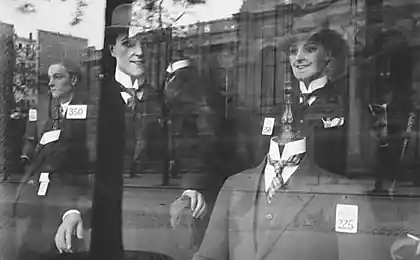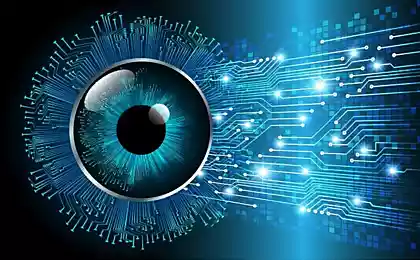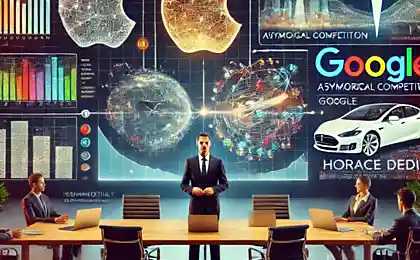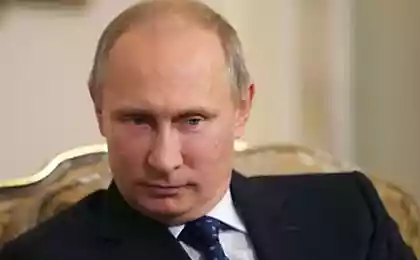465
The third industrial revolution
The future belongs to alternative energy and domestic factories. It turned out that I had received environmental education. And like it's not bad, but a lot of knowledge — many sorrows. Here read the classics like Medounov, weizsäcker, Atkisson and penetrate pessimism: the modern world loses the transition to sustainable development farther and farther from us. But Jeremy Rifkin returns to our world a chance for a brighter future. However, he writes not that you need to do, and that is already happening. Rifkin writes that the legacy of the first and second industrial revolutions — the hierarchical organization of economic and political power is slowly but surely losing ground system horizontal interactions.
Nothing illustrates the industrial way of life is better than giant mechanized factories that manufacture consumer goods on impersonal Assembly line. But what if people will be able to produce right at home and it will be no worse and no more expensive than factory?
The third industrial revolution is millions of people generating their own green energy home. Some do so now — you'll find information about the "zero" homes. Millions of customers who download a digital model adapted to their needs of industrial products and print them in your office or home. Yeah, that tandem is increasingly cheap and effective "green" generators and the development of 3D printing is the backbone of what Rifkin says.
By the way, today the unsealing of an object on a 3D printer requires only 10% of the raw materials used in traditional manufacturing, and energy is less (not to mention the savings on logistics).
Reflections Rifkin is not just another environmental utopia. The idea of a third industrial revolution, officially adopted by the European community and China, supported by the UN. Moreover, humanity is actively trying to accelerate the implementation of the new economic paradigm.
The book will allow you not only to understand the ongoing global processes, but also, perhaps, to make its own contribution to the coming "green" future, no matter where you work.
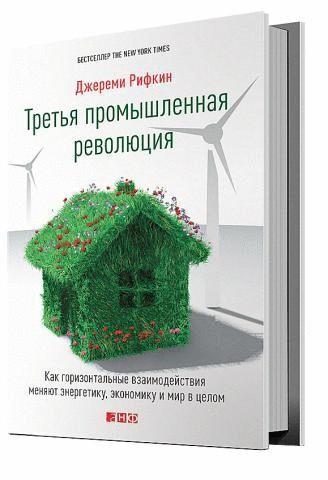
The third industrial revolution. Horizontal interaction is changing energy, the economy and the world in General, the Author Jeremy Rifkin, an American philosopher, economist, writer and public figure. Rifkin is advising the European Union and heads of state around the world. Is Chairman of the roundtable of heads of global business issues of the third industrial revolution.
The publishing house "Alpina non-fiction"
What is the book About the future of the economy, sustainable development.

Why our world is what it is, the Authors are Leading scientists in Russia: Konstantin Severinov, Alexander Auzan, Tatyana Chernigov, Vladimir Surdin, and many others.
Publisher Corpus
What the book is about a collection of short stories about what questions have puzzled scientists in the new Millennium. Where did the universe? What is written in our genes? Can a man live forever? How to modernize the country's economy? After reading the book, you will learn, on what fronts lead the attack of the modern "scientific officers". Among the authors of the book were not only scientists, but also active popularisers of science, and therefore the text is easy to read — does not require knowledge of special terminology.
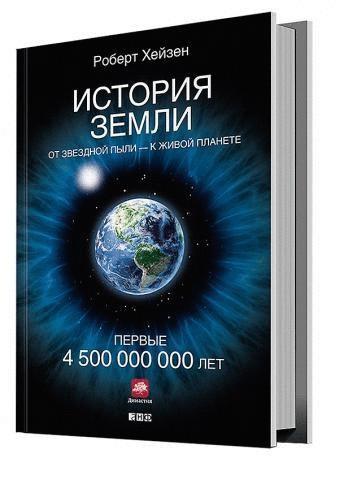
The History Of The Earth. From Stardust to living planet. The first 4 500 000 000 years the Author Robert heizer, a fellow at the Washington geophysical laboratory of the Carnegie institution and Professor of Geology at George Mason University.
The publishing house "Alpina non-fiction"
What the book is about Is a fascinating story about the joint and interdependent evolution of the animate and inanimate nature. Together with the author, the reader makes a journey through billions of years: the origin of the Universe, the emergence of the first chemical elements, stars, Solar system and finally education and the extensive history of the Earth. The drift of continents thousands of kilometers, the rise and fall of huge mountain ranges, the destruction of thousands of species of earth life and a complete change of landscape under the impact of meteorites and volcanic eruptions — the reality is much more interesting than any myth.
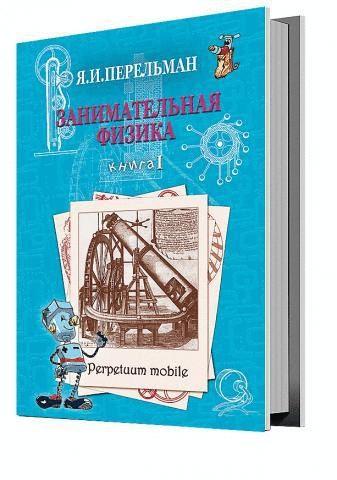
Interesting physics (reprint) Author Yakov Perelman (1882-1942), a classic and a legend. One of the founders of the popular science genre. About it it is possible to tell very much about the friendship with Konstantin Tsiolkovsky, about the fact that it was his idea to translate the clock to winter time to save electricity... His books have been translated into 18 languages, and their total circulation well over ten million copies.
Publishing house "RIMIS"
What the book is about Is not just a collection of intricate tasks and experiences. Familiar things, familiar phenomena are shown with new, unexpected side, and are illustrated with examples from everyday life, literature and the world of contemporary technology. I found the book and to parse common in those days, a hundred years ago, prejudices —most of them, however, is alive to this day.
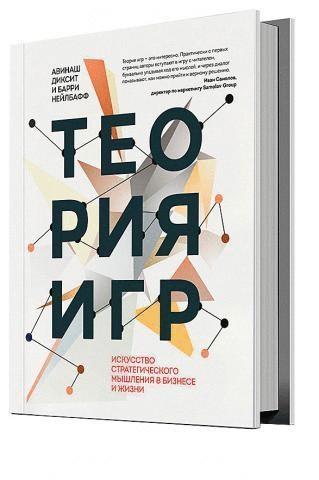
The theory of games. The art of strategic thinking in business and life
The authors Avinash Dixit, Princeton University Professor Barry Nalebuff, Professor at the Yale school of management.
The publishing house "Mann, Ivanov and Ferber"
What the book is about game Theory is an incredibly interesting area of applied mathematics, (by the way, the hero of the film "a beautiful mind", who became a Nobel laureate, is doing just that). Examples from movies, sports, politics, history, the authors show that almost all people and companies involved in the interactions described by the theory of games. You will understand why the approach of "everyone for himself" is not optimal and where it is profitable strategy when trying to do the best for yourself, you are doing the best for others. No, this book is not about idealism, but about accurate calculations.published
Author: Artyom Akshentsev
P. S. And remember, only by changing their consumption — together we change the world! ©
Source: kot.sh/statya/186/kakoy-be-tretya-promyshlennaya-revolyuciya
Nothing illustrates the industrial way of life is better than giant mechanized factories that manufacture consumer goods on impersonal Assembly line. But what if people will be able to produce right at home and it will be no worse and no more expensive than factory?
The third industrial revolution is millions of people generating their own green energy home. Some do so now — you'll find information about the "zero" homes. Millions of customers who download a digital model adapted to their needs of industrial products and print them in your office or home. Yeah, that tandem is increasingly cheap and effective "green" generators and the development of 3D printing is the backbone of what Rifkin says.
By the way, today the unsealing of an object on a 3D printer requires only 10% of the raw materials used in traditional manufacturing, and energy is less (not to mention the savings on logistics).
Reflections Rifkin is not just another environmental utopia. The idea of a third industrial revolution, officially adopted by the European community and China, supported by the UN. Moreover, humanity is actively trying to accelerate the implementation of the new economic paradigm.
The book will allow you not only to understand the ongoing global processes, but also, perhaps, to make its own contribution to the coming "green" future, no matter where you work.

The third industrial revolution. Horizontal interaction is changing energy, the economy and the world in General, the Author Jeremy Rifkin, an American philosopher, economist, writer and public figure. Rifkin is advising the European Union and heads of state around the world. Is Chairman of the roundtable of heads of global business issues of the third industrial revolution.
The publishing house "Alpina non-fiction"
What is the book About the future of the economy, sustainable development.

Why our world is what it is, the Authors are Leading scientists in Russia: Konstantin Severinov, Alexander Auzan, Tatyana Chernigov, Vladimir Surdin, and many others.
Publisher Corpus
What the book is about a collection of short stories about what questions have puzzled scientists in the new Millennium. Where did the universe? What is written in our genes? Can a man live forever? How to modernize the country's economy? After reading the book, you will learn, on what fronts lead the attack of the modern "scientific officers". Among the authors of the book were not only scientists, but also active popularisers of science, and therefore the text is easy to read — does not require knowledge of special terminology.

The History Of The Earth. From Stardust to living planet. The first 4 500 000 000 years the Author Robert heizer, a fellow at the Washington geophysical laboratory of the Carnegie institution and Professor of Geology at George Mason University.
The publishing house "Alpina non-fiction"
What the book is about Is a fascinating story about the joint and interdependent evolution of the animate and inanimate nature. Together with the author, the reader makes a journey through billions of years: the origin of the Universe, the emergence of the first chemical elements, stars, Solar system and finally education and the extensive history of the Earth. The drift of continents thousands of kilometers, the rise and fall of huge mountain ranges, the destruction of thousands of species of earth life and a complete change of landscape under the impact of meteorites and volcanic eruptions — the reality is much more interesting than any myth.

Interesting physics (reprint) Author Yakov Perelman (1882-1942), a classic and a legend. One of the founders of the popular science genre. About it it is possible to tell very much about the friendship with Konstantin Tsiolkovsky, about the fact that it was his idea to translate the clock to winter time to save electricity... His books have been translated into 18 languages, and their total circulation well over ten million copies.
Publishing house "RIMIS"
What the book is about Is not just a collection of intricate tasks and experiences. Familiar things, familiar phenomena are shown with new, unexpected side, and are illustrated with examples from everyday life, literature and the world of contemporary technology. I found the book and to parse common in those days, a hundred years ago, prejudices —most of them, however, is alive to this day.

The theory of games. The art of strategic thinking in business and life
The authors Avinash Dixit, Princeton University Professor Barry Nalebuff, Professor at the Yale school of management.
The publishing house "Mann, Ivanov and Ferber"
What the book is about game Theory is an incredibly interesting area of applied mathematics, (by the way, the hero of the film "a beautiful mind", who became a Nobel laureate, is doing just that). Examples from movies, sports, politics, history, the authors show that almost all people and companies involved in the interactions described by the theory of games. You will understand why the approach of "everyone for himself" is not optimal and where it is profitable strategy when trying to do the best for yourself, you are doing the best for others. No, this book is not about idealism, but about accurate calculations.published
Author: Artyom Akshentsev
P. S. And remember, only by changing their consumption — together we change the world! ©
Source: kot.sh/statya/186/kakoy-be-tretya-promyshlennaya-revolyuciya
How to water the tomatoes and whether you need to water at all?
Mikhail Litvak: Almost all spouses do not want to repeat their marriage.








